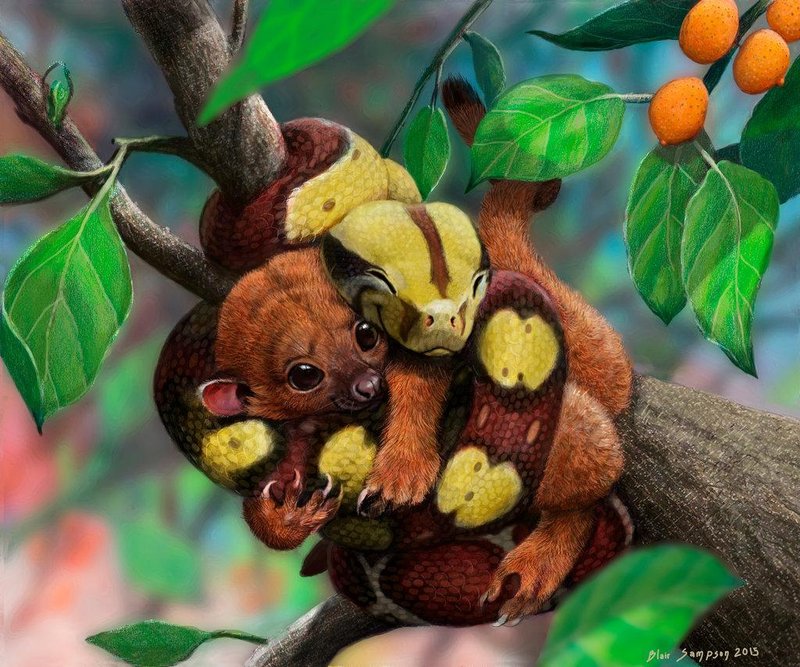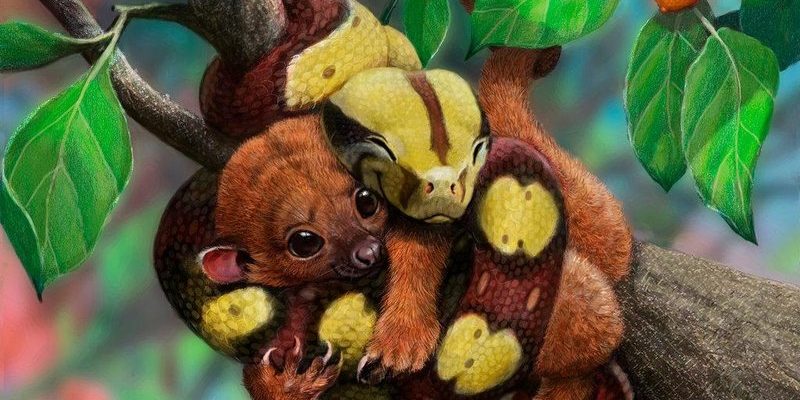
Kinkajous belong to the raccoon family and are native to Central and South America. Often mistaken for a distant relative of the lemur due to their big eyes and nocturnal habits, they’re actually more closely related to animals you might see rummaging through your trash! Understanding their evolutionary path helps us appreciate not just where they came from, but also their unique role in their ecosystem. So, grab that coffee, and let’s dive into the captivating evolutionary history of the kinkajou.
What Are Kinkajous?
Before we embark on their evolutionary journey, let’s get to know kinkajous a bit better. These little guys, scientifically known as *Potos flavus*, are small, arboreal mammals typically found in the forests of Central and South America. They resemble a mix between a monkey and a raccoon, featuring soft, golden-brown fur and a long, curly tail that helps them navigate through the trees.
Kinkajous are mostly nocturnal, meaning they come alive at night when they’re out searching for food. Their diet mainly consists of fruits, nectar, and even insects. Isn’t it amazing how their specialized diet plays a significant role in their environment? Kinkajous are crucial for pollination and seed dispersal, making them hidden superheroes of the rainforest.
The Family Tree: Kinkajou’s Place in the Animal Kingdom
Kinkajous are part of the Procyonidae family, which includes raccoons, coatis, and olingos. This family tree branches out to show us how these animals have adapted to their environments over millions of years. Kinkajous share a common ancestor with raccoons, and while you might not think they have much in common, they both exhibit some pretty clever adaptations for survival.
As members of the Procyonidae family, kinkajous have a number of unique traits. For instance, they possess sharp claws that help them climb trees and a special wrist bone that allows for greater flexibility. These adaptations are essential for a life spent navigating the canopies of their forest homes. Here’s the thing: understanding this family connection helps illustrate why kinkajous behave the way they do.
Evolutionary Background: Where Do Kinkajous Come From?
Let’s rewind the clock and explore the kinkajou’s evolutionary background. Kinkajous likely evolved in South America, with their ancestors appearing around 25 million years ago. By studying fossil records and genetic data, scientists can trace back the lineage of kinkajous and understand how they adapted over time.
During the Miocene epoch, environmental changes led to the gradual shift in habitats, influencing how species developed. Kinkajous adapted to life in the trees as their environment changed. Over time, those physical traits, like their prehensile tails, allowed them to thrive in a vertical world. Imagine how challenging it must have been to balance on a branch while reaching for a delicious fruit! It took millions of years of evolution and natural selection to create the kinkajou we know today.
Kinkajous and Their Ecosystem: An Interconnected Story
You might be wondering why kinkajous matter in their ecosystem. These creatures don’t just hang around for the fun of it; they play a vital role in maintaining the health of their environment. As they feed on fruits and nectar, kinkajous help in pollination and seed dispersal. This means they’re not only eating but also helping new plants grow. Talk about giving back!
Their role as seed dispersers is especially important in the rainforest, where many plants rely on animals for reproduction. Without kinkajous and their relatives, certain plants would struggle to propagate. Since these mammals can transport seeds over long distances, they contribute to the biodiversity of their habitat. You could say their evolutionary journey isn’t just about survival; it’s also about nurturing the planet.
Conservation Status: Protecting the Kinkajou
Sadly, the kinkajou’s journey is facing challenges. As rainforests are threatened by deforestation, habitat loss, and climate change, kinkajous are at risk. Their living spaces are disappearing, and this not only endangers them but also undermines the whole ecosystem they support.
Various conservation efforts aim to protect kinkajous and their habitats. Organizations are working hard to preserve rainforest areas and educate local populations about the importance of these charming animals. Honestly, if we don’t act soon, we risk losing not just kinkajous but also the intricate web of life they help support. Protecting them is crucial, not just for their survival but for the health of the ecosystem as a whole.
The Kinkajou Today: A Glimpse into Their Lives
Living in the trees, kinkajous have fascinating behaviors that reflect their unique adaptations. They communicate through a variety of sounds, from growls to whistles, helping them maintain social bonds with each other. If you’ve ever seen a kinkajou in the wild, you might marvel at their playful antics as they scamper from branch to branch, showcasing their agility and curiosity.
They are also known for their strong sense of smell, which they use to locate food. Their long tongues allow them to reach deep into flowers to access nectar, acting like a built-in straw! This feeding habit not only sustains them but also underscores their role in their ecosystem. Consider how their quirks and traits all tie back to their evolutionary history—it’s a beautiful dance of adaptation.
The evolutionary journey of the kinkajou is more than just a fascinating tale; it’s a reminder of the fragility and interconnectedness of life in the rainforest. Each kinkajou has a story, woven into the fabric of nature, playing a vital role in their environment. Protecting these magical creatures isn’t just about saving a single species; it’s about preserving the intricate relationships that keep our planet thriving.
As we explore their history, we become more aware of the challenges they face today. By learning about kinkajous, we can appreciate the rich biodiversity of our planet and the importance of conservation efforts. So the next time you think of kinkajous, remember: these little mammals are not just cute; they’re essential players in the grand story of nature.

